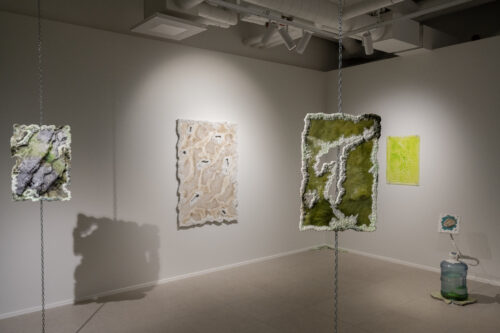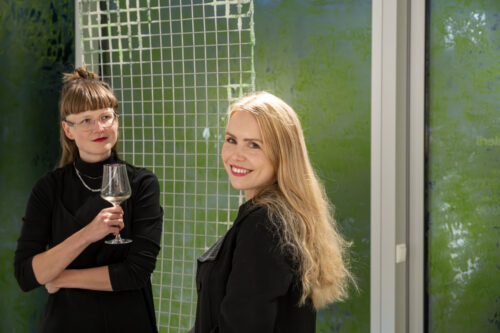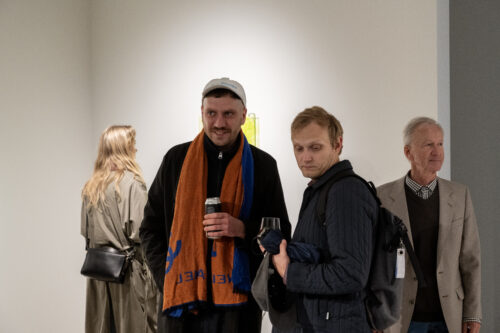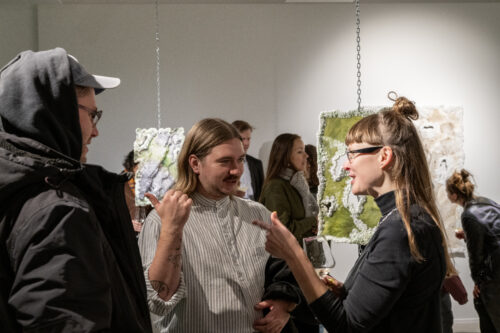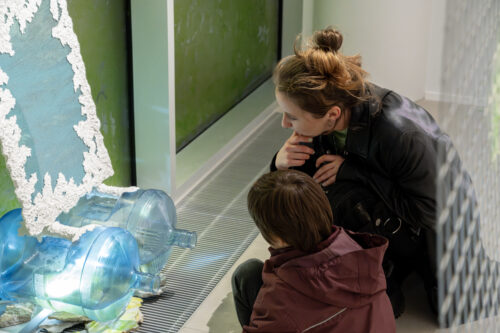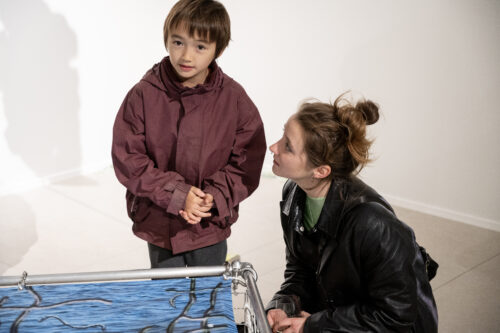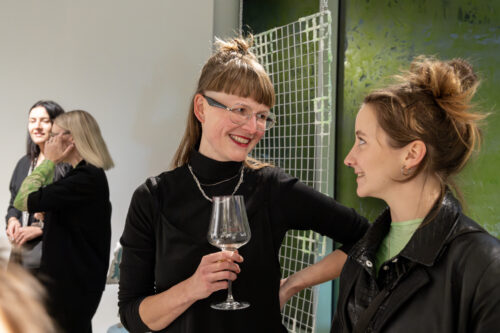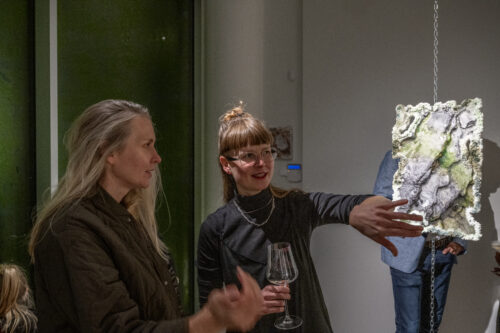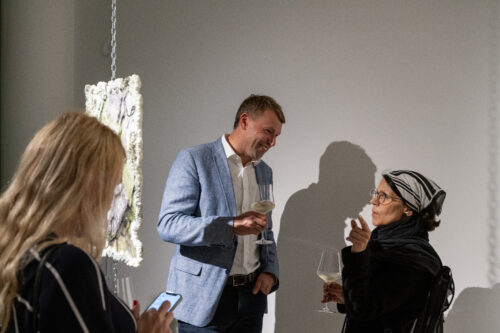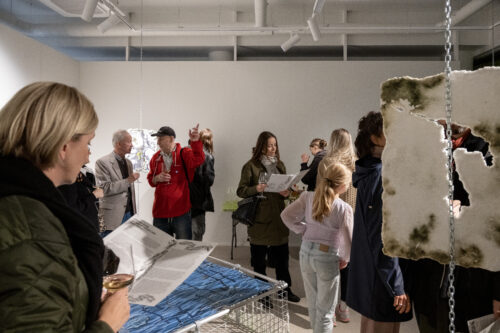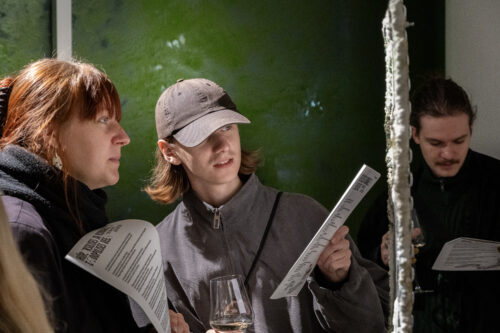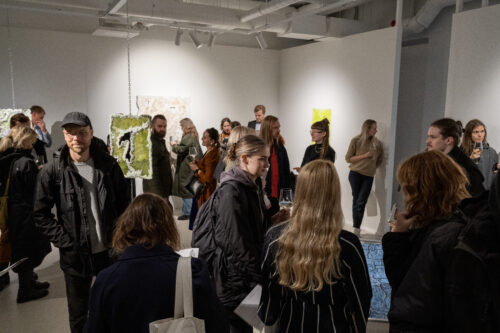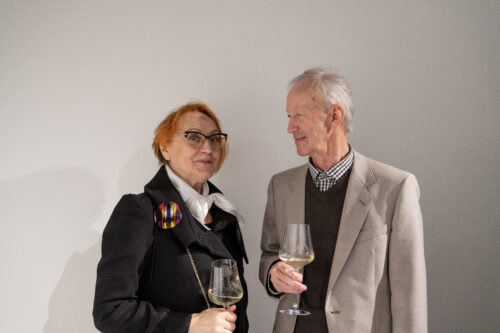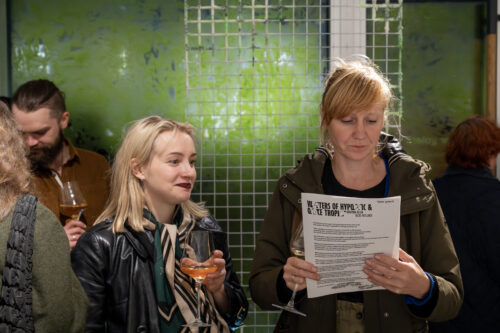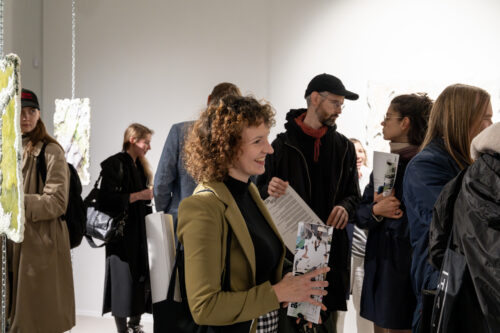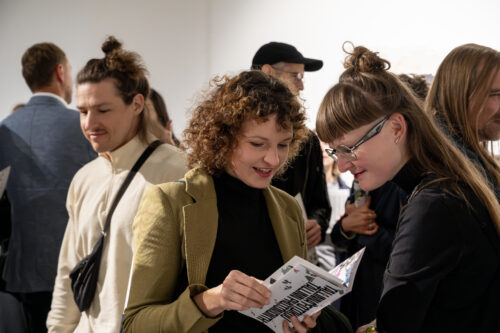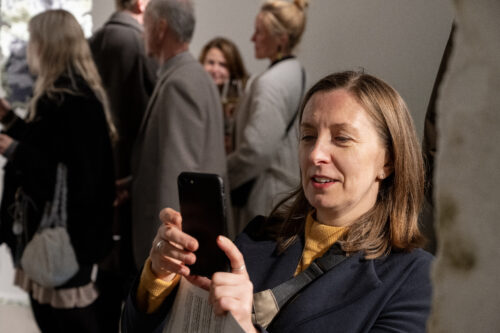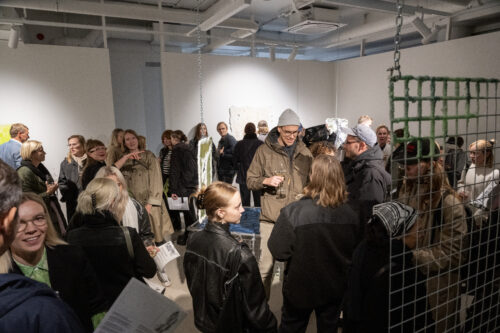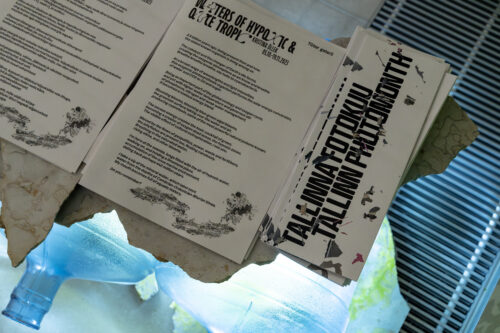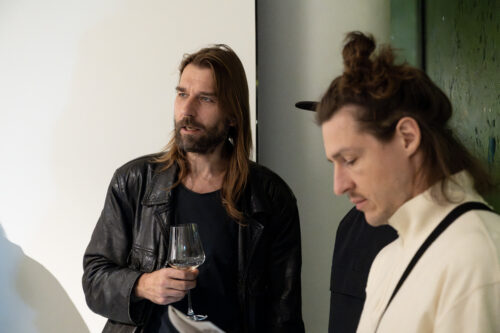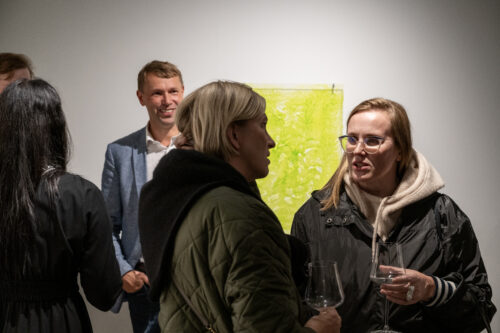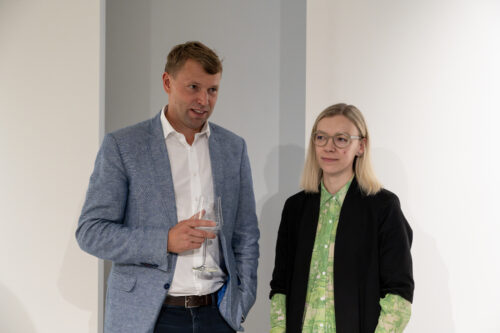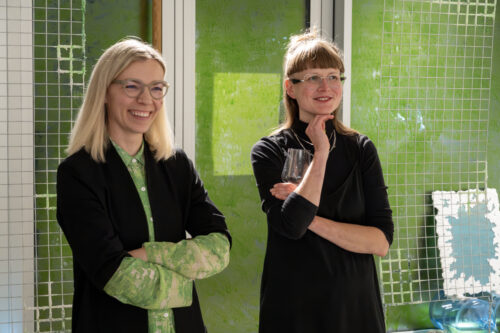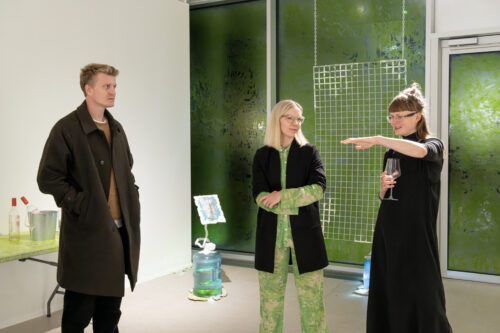Through photographic works and installations combining limestone, sea salt, clay and bioplastics, Õllek has created a bridge between the present moment and the biodiverse equatorial and tropical past of the local seabed. She has exposed the geological time of the Baltic Sea – the stories of which are narrated by crinoids, tabulata, trilobites, brachiopods, cephalopods, cyanobacteria and other fossilised ghosts of the ancient marine life. While we mostly associate cyanobacteria with the toxic blue-green algae that keeps us from having a swim in bodies of water, these bacteria have witnessed the billions of years of evolution and progress while remaining almost unchanged themselves.
According to art historian Annika Toots, the underlying research on marine ecology and anthropocentric influences, both in the context of the North Sea and the Baltic Sea, is rooted in Õllek’s interest in the relationship between new technologies and extractivist thinking, including the controversial issue of deep-sea mining. The sea echoes humanity’s desires and fears: standing in the sea, we are simultaneously standing in the deep past of tropical waters once teeming with life and in the deep future of waters asphyxiated by toxic capitalism.
Kristina Õllek’s exhibition at Tütar Gallery will be open until November 19th, and admission is free for the public. The gallery is located at Vesilennuki 24 in the Noblessner Port District and is open from Thursday to Friday from 1:00 PM to 7:00 PM and on Saturdays and Sundays from 2:00 PM to 6:00 PM.
The exhibition is part of the satellite program of the Tallinn Photomonth 2023 contemporary art biennial.
Accompanying text: Annika Toots
Graphic design and artist dialogue partner: Kert Viiart
Special thanks: Kert Viiart, Mare Isakar, Carlotta Põdra, Tartu University Natural History Museum, Artproof OÜ, Põhjakivi OÜ
The exhibition is supported by the Estonian Cultural Endowment
Photo gallery: Roman-Sten Tõnissoo
